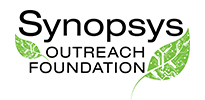- 2024 will be an In-Person Fair
- New Field of Study (Middle School only): Food Science/Engineering
- ISEF’s Human Participants Rules about prohibition of conducting medical procedures on anyone except themselves
- ISEF’s Human Participant Involvement in Student-Designed Invention
- ISEF’s Risk Assessment Guide & Online Survey Consent Procedures
- ISEFs Restructured the listing of vertebrate animals
- ISEF’s Potentially Hazardous Biological Agents (PHBA) Rules
- ISEF’s Forms (RRI, Form 3, Form 4)
2024 will be an In-Person Fair
We are excited to announce that the 2024 Synopsys Championship will be In-Person this year! Details about safety/health precautions will be announced on our Fair Week page.
NEW Field of Study for Middle School only: Food Science/Engineering
We are excited to introduce a new field for the competition for Grade 6 to 8 only – ‘Food Science/Engineering’. Projects in the new field must not use humans or vertebrate animals. A list of suggested research areas is found at https://science-fair.org/rules-and-registration/project-categories/”
Highlights of Important changes to the ISEF 2023-2024 International Rules for Pre-Collegiate Research
Details at ISEF website.
HUMAN PARTICIPANT RULES
• Rule 6 modified to address the prohibition of conducting medical procedures on anyone except themselves
Students are prohibited from independently diagnosing disease, administering medication, and/or performing medical procedures on human participants.
- A student may observe and collect data for analysis of medical procedures, medication/treatment efficacy, and diagnosis of illness, only under the direct supervision of a licensed health care provider/professional. Students are prohibited from drawing blood or conducting any other medical procedures on anyone except themselves.
• In Human Participant Involvement in Student-Designed Invention, Rule 1 was modified to clarify the use of professional feedback
IRB review and pre-approval is required when the student- designed invention, prototype, application, etc. is tested by human participants other than the student researcher(s) or single adult guardian/adult sponsor/QS/DS when the testing requires an adult tester. This includes surveys conducted regarding potential use or opinions of the invention or consumer product by the general public. This is not intended to apply to professional feedback from experts in the field of study.
• In Risk Groups under Human Participant & IRB Resources, Rule 4
See the online Risk Assessment Guide and Online Survey Consent Procedures for more detailed information on risk assessment. If the risk is more than minimal, a Risk Assessment Form 3 is required.
VERTEBRATE ANIMAL RULES
• Restructured the listing of vertebrate animals
Vertebrate animals, as covered by these rules, are defined as:
- All nonhuman vertebrates (including fish) at hatching or birth.
- Live nonhuman vertebrate mammalian embryos or fetuses
- Tadpoles
- Bird and reptile eggs starting three days (72 hours) prior to hatching
Exception: Because of their delayed cognitive neural development, zebrafish embryos may be used up to seven days (168 hours) post-fertilization and not be considered a vertebrate. However, regardless of time of treatment, survival past the 7 days must be considered a vertebrate animal and the entire study is subject to all of the rules below. .
POTENTIALLY HAZARDOUS BIOLOGICAL AGENTS (PHBA) RULES
• In Rules for All Studies, Rule 10 modified to prohibit the use of prions or prion-like proteins
All studies involving the use of prions or prion-like proteins are prohibited.
FORMS
Regulated Research Institutional/Industrial Setting Form (1C)
• Clarified question 5 which now reads:
Did the student(s) work on the project as part of a group? Yes or No. Were there other high school students present? If yes, please list the student names and describe how their work was related or different from the work of this project.
Risk Assessment Form (3)
• Included human participants in the title box
Text now reads: Must be completed before experimentation; recommended for all projects. May be required for projects involving Human Participants, Hazardous Chemicals, Materials or Devices, or Potentially Hazardous Biological Agents
Human Participants Form (4)
• Under BELOW – IRB USE ONLY added text that risk assessment is required if project is more than minimal risk
More than Minimal Risk (a risk assessment form 3 is required).

